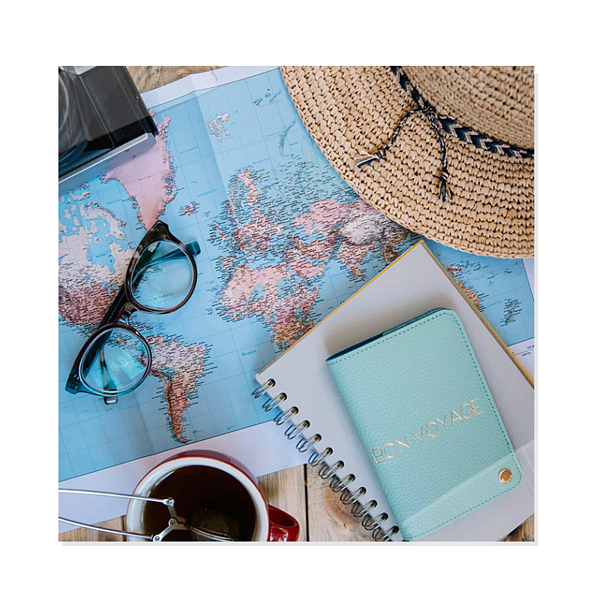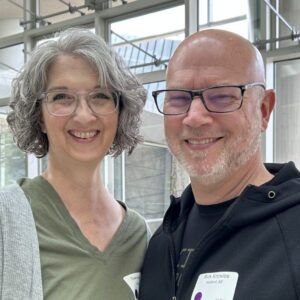
I’ve always dreamed about exploring new places, but in my fantasy explorations, my body is strong and capable and I can do whatever I want. That, however, is not my reality.
My reality includes living with the limitations brought on by Marfan syndrome. But the living part is most important to me. I’m 22 years post aortic dissection and don’t want to miss a thing. A few years ago, I told my husband that I wanted to see the entire U.S. with him. So we listed all 50 states, checked off the ones we’d visited together, and decided this would be our goal.
Before our first trip, we explored what potential impact my specific limitations could have and I worried that I would hamper my husband’s ability to explore. Now that we have hit 18 states – and have 32 left to go — there are specific benefits, challenges and modifications that we’ve learned about traveling with a disability.
Positivity is always a good starting place, so here are the benefits.
- Travel is a way to embrace the life I have, limitations and all, and fill it with something that gives me joy.
- Travel gives me something to look forward to. On days when pain or fatigue knocks me flat, I can research places I want to go and what I want to see when I get there.
- Travel inspires me to stay in shape. Pain demotivates, but knowing that walking around my neighborhood will help me walk on a trip gives me the motivation I need.
- There are no chores on vacation, which frees up energy to enjoy our trip, and being in a new place sometimes takes pain down to a lower level than I experience at home.
- Travel teaches me how to be in the moment. I told my husband on one of our earliest trips that I wanted to be who we were on vacation when we got home. The fun, spontaneity, and laughter were the best souvenirs we could bring back with us.
The challenges we’ve encountered are not insurmountable.
- No matter where I go, I have a plan just in case. This means I research local emergency services and ensure I have enough medication. One time, I had to find a lab in Hawaii to make sure I was getting the right amount of my anticoagulant.
- I talk to my doctors regularly about travel and what they want me to avoid. They are encouraging and helpful as I find ways to live my life to the fullest while still being wise.
We make modifications to protect and care for my body.
- I research before we go. I find sites that are accessible and make notes, including physical requirements, so that we can decide if my body can handle it that day.
- We prioritize. My husband has been great about reminding me that the number one goal is time together. Flexibility is the most important thing we can take with us! We make our list and then hold to it loosely, knowing that our main goal is accomplished no matter what we end up doing on our trips. Even when we end up spending a day resting, we’ve still accomplished our goal. Beyond that, we figure out ahead of time which sites we really want to see and which ones are optional.
- I pace myself. If I know that we really want to walk through a nature preserve, I make sure the day before and the day after are more low-key and restful.
- We make space for disappointment. On our last trip we really wanted to do an easy hike to a waterfall. Unfortunately, I was six weeks post knee surgery and, while I was cleared to do the hike, it became evident that it was going to be too much for me. We let ourselves be sad and found a stream we could drive to and still get our feet in the cold, clean water without a hike.
- And, finally, I plan rest days right before and after I come home from a trip.
My trips don’t look the same as my friends’ trips, and that’s ok. We may not pack as much into each day or see as many things. Modern philosopher Alain de Botton sums it up perfectly for me, “The pleasure we derive from journeys is perhaps dependent more on the mindset with which we travel than on the destination we travel to.”
Travel Tip: It’s important to bring your medical records with you when you are traveling, in case of emergency. Treating physicians will need to know you’re your diagnosis, your medical history, and the medications you take. Backpack Health makes it easy for you. Simply download the app on your smartphone (the PRO version is free for people with Marfan and related conditions, and their family members, through a partnership with The Marfan Foundation) and upload your medical information. Information in Backpack Health can be translated into five languages. It is a must-have no matter where in the world you travel!


Dawn Knowles, a member of the Foundation’s Marfan Writing Group, was diagnosed with Marfan syndrome at age 21 and survived an aortic dissection at age 28. She loves writing, going to the beach, and, most of all, spending time with her husband, Rick, adult kids, and two adorable grandsons. She lives in Michigan.
